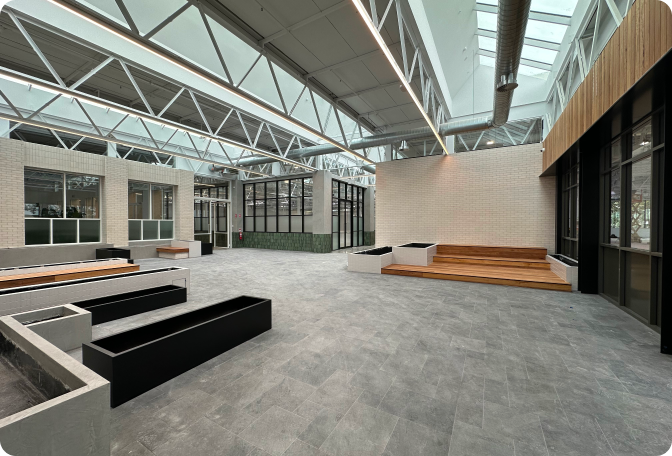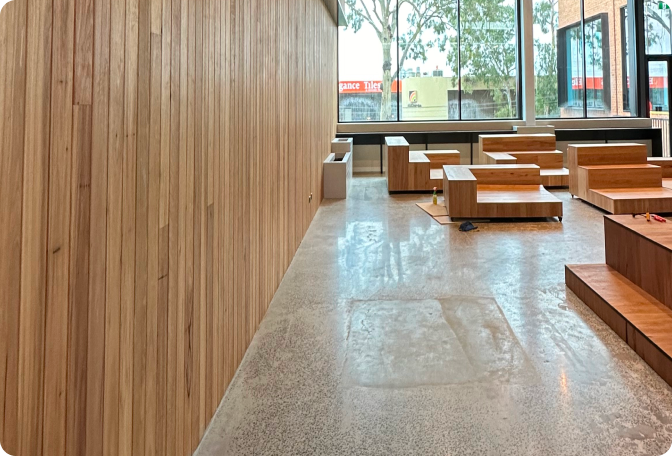Dating back 70 years, the buildings of the former Philip Morris factory have been converted into the vibrant Morris Moor neighbourhood using a sustainable adaptive reuse program.
In other words, the original warehouses have been repurposed, taking their bones – eaves, large windows, and structure – to create an environment that pays homage to its humble beginnings and modern future. Designed and built to target an equivalent to a 5-star NABERS rating, Morris Moor exemplifies energy efficiency.

Through its adaptive reuse program, we’ve saved over 19 million kilograms of embodied carbon. To put that into perspective, that’s the equivalent of 400 rail cars full of coal and would take 4,300 MCG ovals of Eucalyptus Forest to absorb that much carbon over the course of a year.
All new materials were carefully selected to limit carbon emissions, and the complex is fully electric. We put a renewable energy strategy in place, with a 245kW solar farm installed across the roof of Building 4.

A sustainable approach was baked into the creation of our inspired social environment, including ample green spaces where the 60-year-old trees still stand alongside thousands of new plants and trees. Lofty, high ceilings bring an abundance of light to the space, making room for the indoor gardens, and those who occupy them, to thrive.






